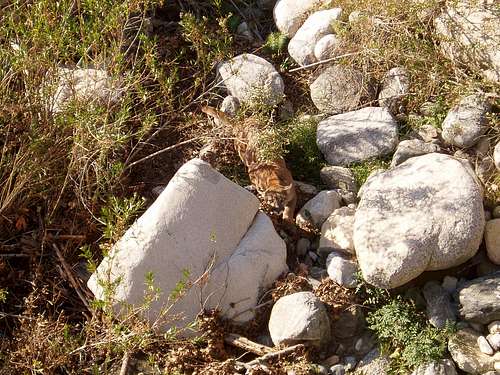cp0915 - May 20, 2008 9:58 am - Voted 10/10
Good articleI enjoyed it. Good info and photos.
FlatheadNative - May 21, 2008 1:45 am - Hasn't voted
Re: Good articleI am glad you liked it.
Bob Sihler - May 21, 2008 11:13 am - Voted 10/10
Awesome albumThe best I have seen in a long time. Great information and use of pictures.
FlatheadNative - May 21, 2008 1:26 pm - Hasn't voted
Re: Awesome albumThanks Bob for the kind words.
Ice Man Jerry Van - Oct 15, 2008 11:05 pm - Voted 10/10
Thank you for the information on mountain lionsAnd for posting my picture for your article.
Athos791 - Nov 30, 2008 12:20 am - Voted 10/10
Good Read!Thanks for the informative article. Some cool pictures and lots of information. Also, there have been mountain lions spreading into the mid-western states in recent years. My grandfather lives on a large farm in the country in Illinois and has had and seen them on his land.
FlatheadNative - Nov 30, 2008 1:02 am - Hasn't voted
Re: Good Read!wow that's real interesting. we have had them in our neighborhood but we live in Montana and close to the mountains. usually the subadults follow the creeks down to hunt deer. my daughters boyfriend saw one on Wednesday while he was out hunting elk and deer.
Athos791 - Nov 30, 2008 3:35 pm - Voted 10/10
Re: Good Read!Indeed, I didn't believe him the first time he told me! I'll have to email him and see if he's got any pictures on his computer of the tracks and/or the cats themselves! I would love to see a cougar in the wild some day, hopefully not too close tho.
royanderson - Mar 25, 2013 12:33 pm - Hasn't voted
So. Cal. Mountain LionGreat article and an incredible picture; I don't think I'd want to see that mountain lion like that unless the photographer had a great zoom lens. We have had problems with a mountain lion locally, and one has been spotted in the Verdugo Mountains. There have also been some recent sitings and attacks involving hikers and mountain bikers. So even in a populated area, they can still be a problem. There is also another good picture of a mountain lion posted on SummitPost under San Gabriel Mountains, that one looking down at it. Such pictures make me a little leery, especially since I like to hike in a brushy area where a mountain lion could hide, and it is an area where on has previously been spotted.
TimB - Mar 25, 2013 12:48 pm - Voted 10/10
Great article!I had mountain lion tracks all over my front porch(literally right outside my doorway) 3 or 4 days ago.Just north of the Nevada border where I live has many, many lions, but you almost never see them 'in person'.
johnm - Mar 25, 2013 3:36 pm - Voted 10/10
The scream of a Mountain Lion... is certainly unforgettable once heard it will remain in your memory forever.
Agreed, the Verdugo Mountains here in the Los Angeles area are home to at least one cat and maybe more. About seven years ago I was hiking in a back canyon when I heard a cat take down its prey. It was well ahead and out of sight but the sound of the struggle and fight is embedded strongly in my memory.
Bill Reed - Mar 29, 2013 5:07 pm - Hasn't voted
Good article!!I've never encountered one, yet, but it's good to know that bear spray is recommended. Thanks for taking the time to research and post this article.
You may have already seen this stuff but if not, it is quite interesting. Here's a link regarding attacks on humans from 1890 to 2012. It's a long list. http://www.cougarinfo.org/attacks.htm
Also, this book has a lot of info on the lions adaptation to living around humans. Since reading it, I carry a big knife along with my big stick when I hike alone. http://www.beastinthegarden.com/Home.html
Wastral - Mar 29, 2013 5:35 pm - Hasn't voted
=)I have watched from by Kitchen window as a pair of male cougars went at it during mating season. My dog brilliantly cowered in his doghouse not saying a peep. Lets just say the backyard was destroyed... Have beaver, bear, elk, deer, bobcat, muskrat, and yes cougars go traipsing through my yard on a near daily basis. My dog thinks the rabbits make great squeeky toys.
Kearston Washington.















Comments
Post a Comment